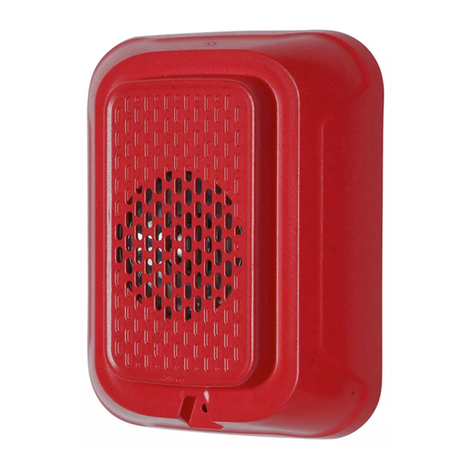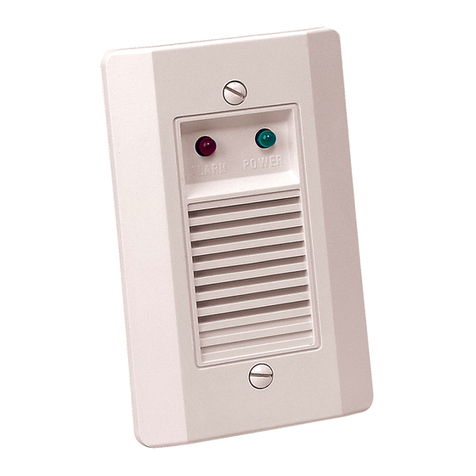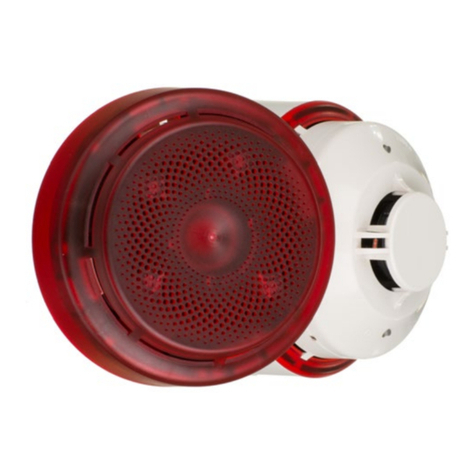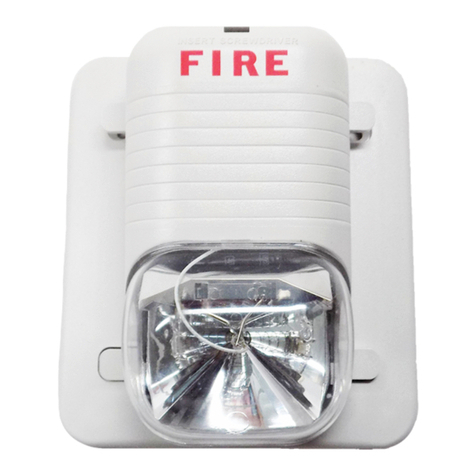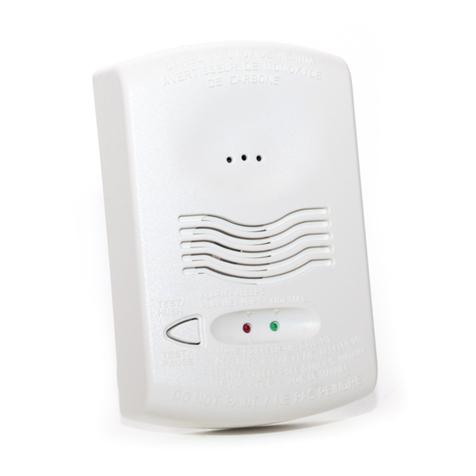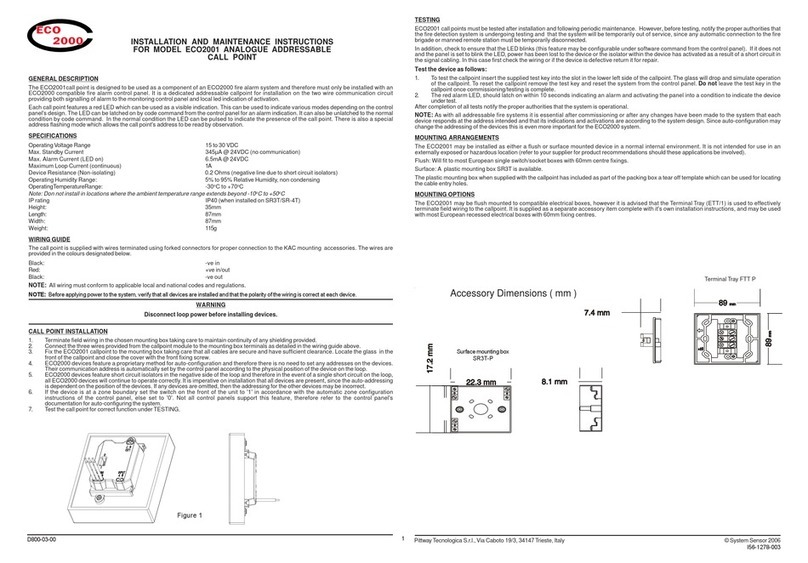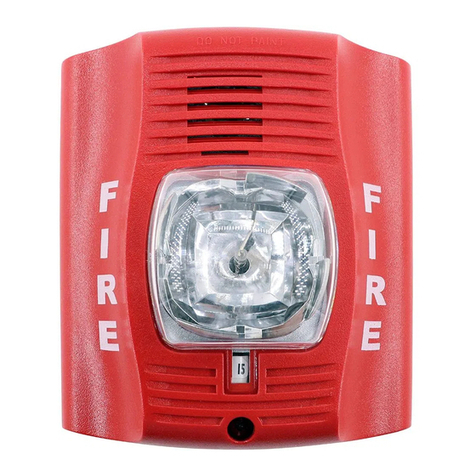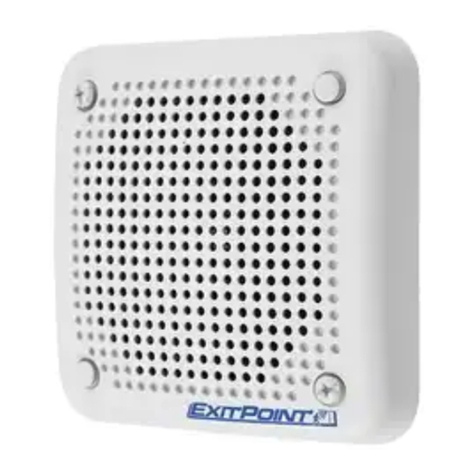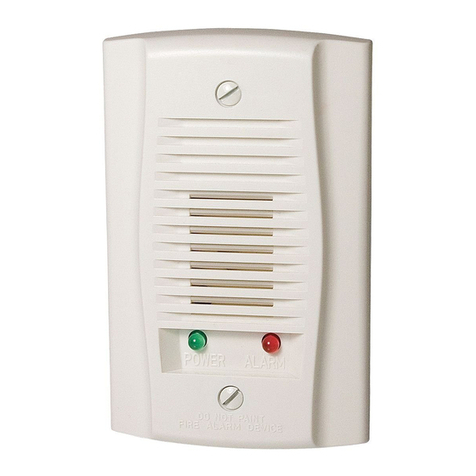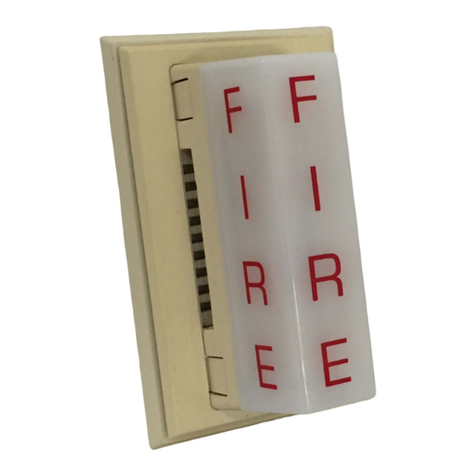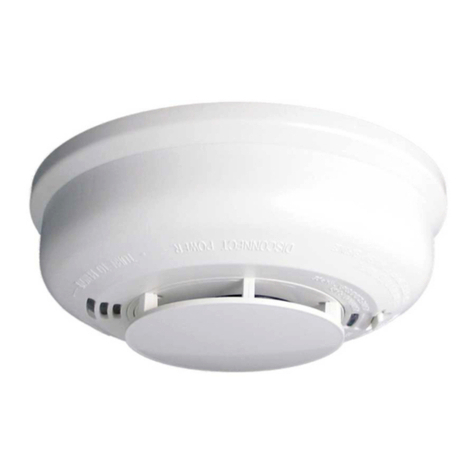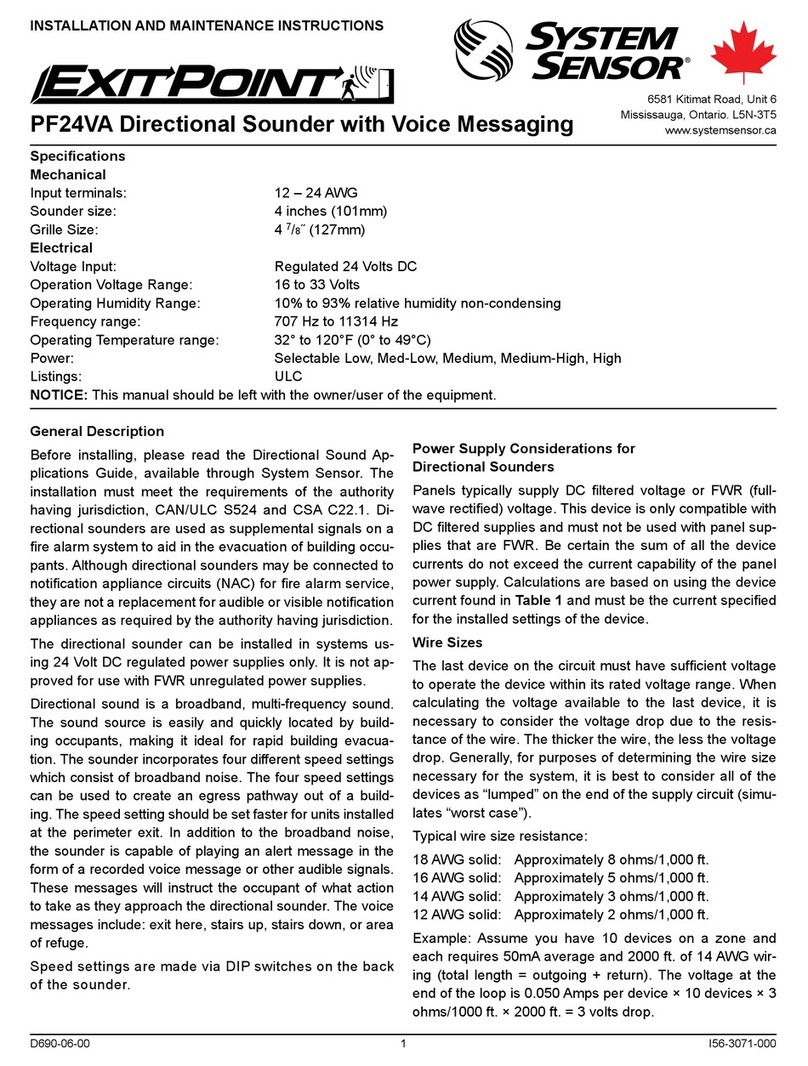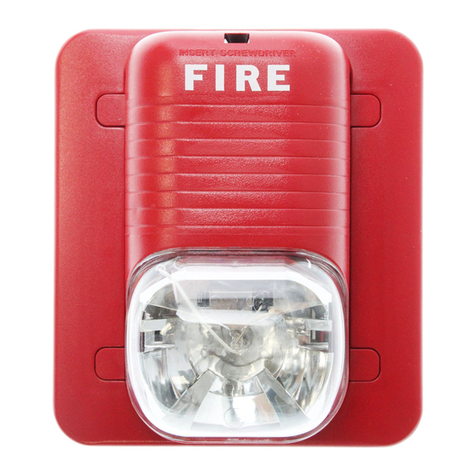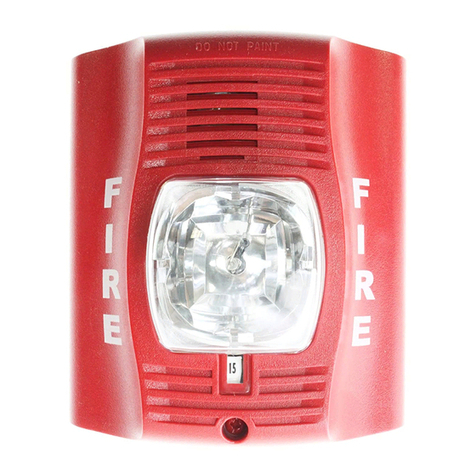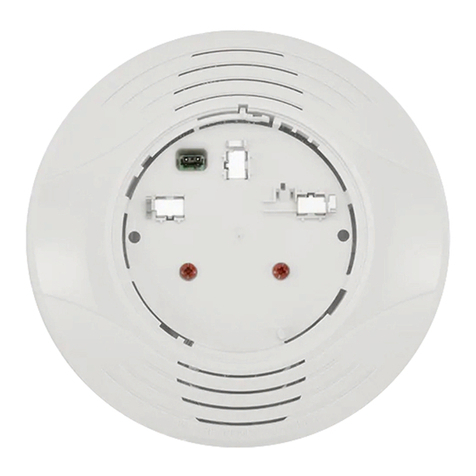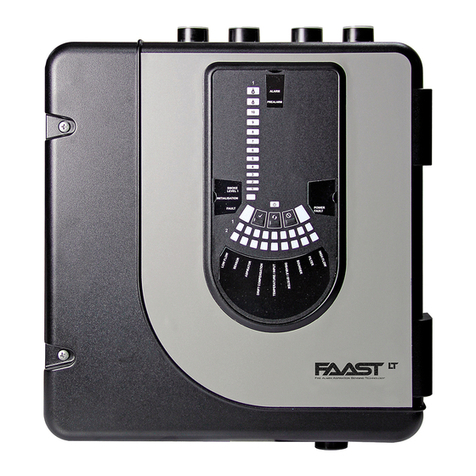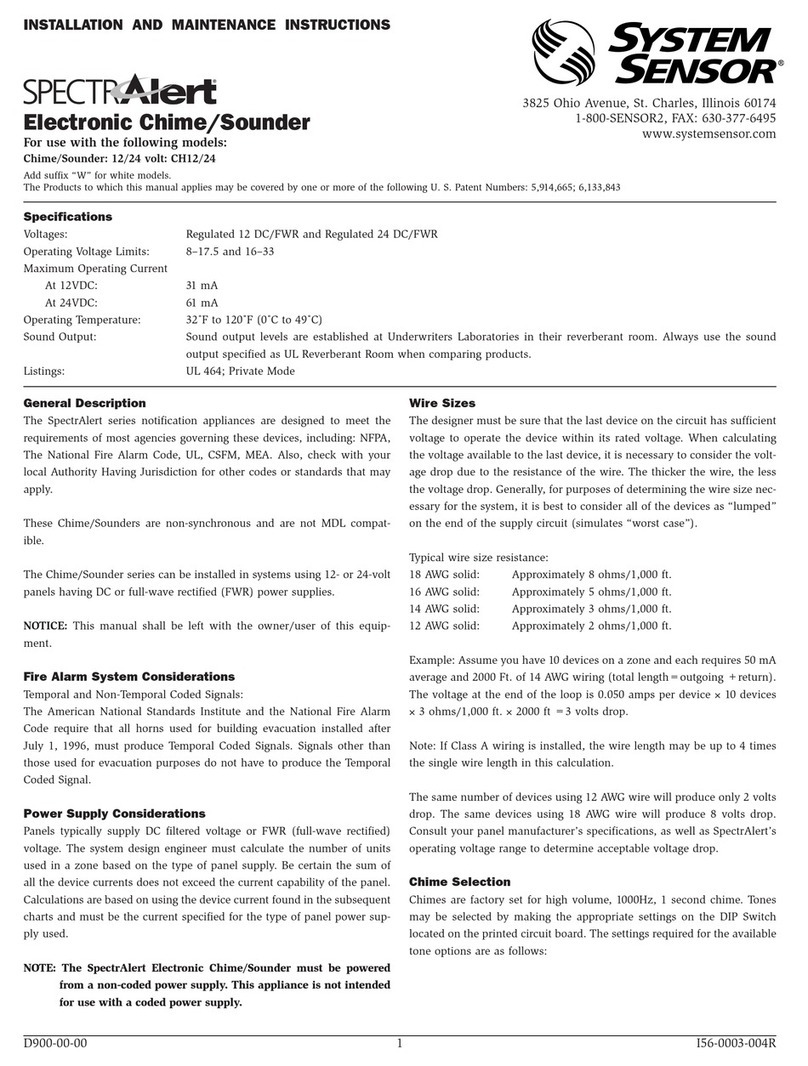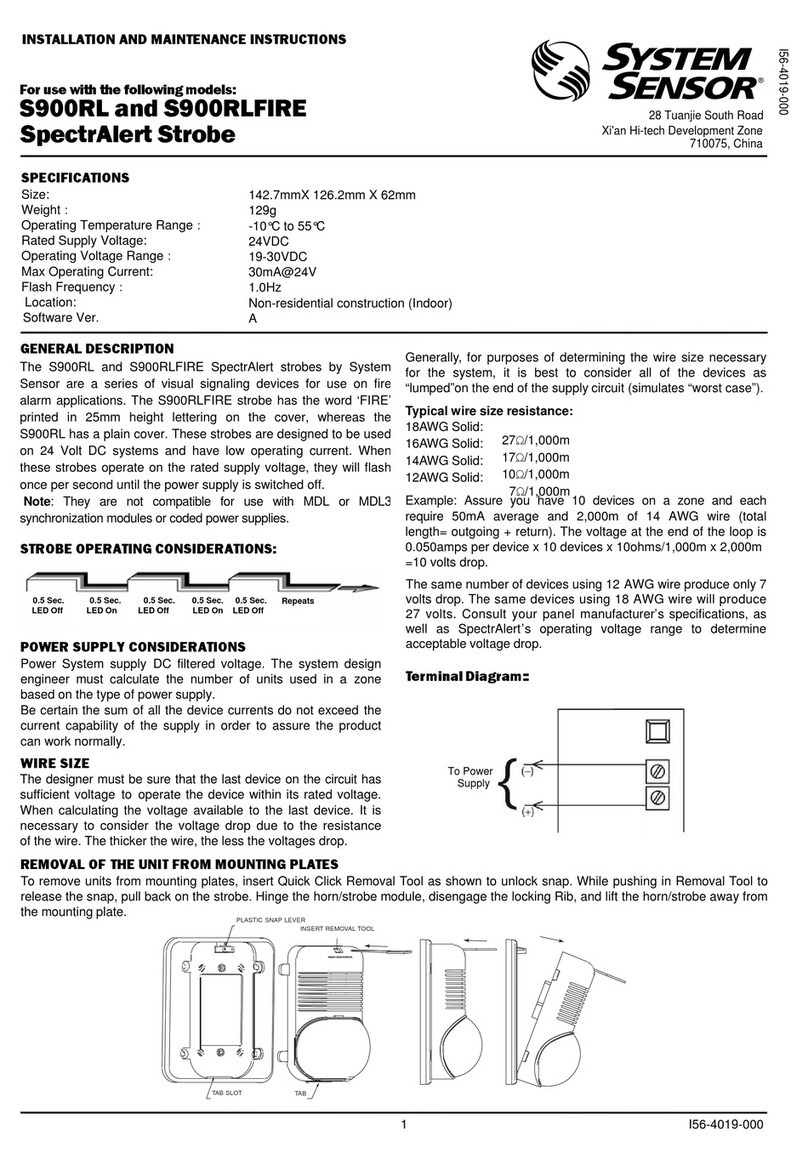
1 I56-9109-001
12/13/2018
BEFORE INSTALLING
Please read the System Sensor Audible Visible Application Reference Guide,
which provides detailed information on notification devices, wiring and
special applications. Copies of this manual are available from System Sensor.
CAN/ULC S524 guidelines should be observed.
Important: The notification appliance used must be tested and maintained
following CAN/ULC S536 requirements.
GENERAL DESCRIPTION
System Sensor series of notification appliances offer a wide range of audible
and visible devices for life safety notification. Our 4-wire horn strobes come
with 10 field selectable tone and volume combinations and 7 field select-
able candela settings. Intended for indoor applications and approved for wall
mount installations only.
The horn is listed to CAN/ULC S525 and the strobe is listed to CAN/ULC
S526.
System Sensor notification appliances are designed to be used in either 12
VDC, 24VDC, or 24V FWR (full wave rectified) systems. System Sensor AV de-
vices can be activated by a compatible fire alarm control panel or power sup-
ply. Refer to the appropriate fire alarm control panel manufacturer or power
supply for more information.
System Sensor wall 4-wire horn strobes are electrically backward compat-
ible with the previous generation, since 1996, of notification appliances.
They come enabled with System Sensor synchronization protocol which re-
quires connections to a power supply capable of generating the System Sen-
sor synchronization pulses, a FACP NAC output configured to System Sensor
synchronization protocol, or the use of MDL3 module to generate the syn-
chronization protocol.
FIRE ALARM SYSTEM CONSIDERATIONS
The National Building Code of Canada requires that all notification appli-
ances, used for building evacuation produce temporal coded signals. Signals
other than those used for evacuation purposes do not have to produce the
temporal coded signal. System Sensor recommends spacing notification appli-
ances in compliance with CAN/ULC S524.
SYSTEM DESIGN
The system designer must make sure that the total current draw by the devices
on the loop does not exceed the current capability of the panel supply, and
that the last device on the circuit is operated within its rated voltage. The
current draw information for making these calculations can be found in the
tables within the manual. For convenience and accuracy, use the voltage drop
calculator on the System Sensor website (www.systemsensor.com).
When calculating the voltage available to the last device, it is necessary to
consider the voltage due to the resistance of the wire. The thicker the wire, the
smaller the voltage drop. Wire resistance tables can be obtained from electri-
cal handbooks. Note that if Class A wiring is installed, the wire length may
be up to twice as long as it would be for circuits that are not fault tolerant.
The total number of strobes on a single NAC must not exceed 69 for 24 volt
applications.
AVAILABLE TONES
System Sensor offers a wide variety of tones for your life safety needs, includ-
ing temporal 3 pattern (½ second on, ½ second off, ½ second on, ½ second
off, ½ second on, 1½ off and repeat) which is specified by ANSI and National
Building Code of Canada for standard emergency evacuation signaling.
To select the tone, turn the rotary switch on the back of the product to the
desired setting. (See Figure 1.) Available horn settings can be found in Table 1.
NOTE: The standard mini-horn sound is 3.1 kHz. The legacy sound of the
SpectrAlert Advance line is EM (Electro-mechanical): this hops frequencies
between 2Hz and 4Hz. For EM Coded positions, temporal coding must be
provided by the NAC. If the NAC voltage is held constant, the horn output will
remain constantly on.
FIGURE 1. AUDIO SELECTOR
A0473-00
INSTALLATION AND MAINTENANCE INSTRUCTIONS
Selectable Output
Four-wire Horn Strobes – Wall Mount
For use with the following models:
Standard Wall Mount Horn Strobes: P4RLA, P4WLA. Add suffix “-E” for English, “-F” for French.
PRODUCT SPECIFICATIONS
Standard Operating Temperature: 32°F to 120°F (0°C to 49°C)
Humidity Range: 10 to 93% Non-condensing
Strobe Flash Rate 1 flash per second
Nominal Voltage: Regulated 12VDC or regulated 24DC/FWR
Operating Voltage Range: 8 to 17.5V (12V nominal) or 16 to 33V (24V nominal)
Operating Voltage with MDL3 Sync Module: 8.5 to 17.5V (12V nominal) or 16.5 to 33V (24V nominal)
Input terminal wire gauge: 12 to 18 AWG
DIMENSIONS FOR PRODUCTS AND ACCESSORIES
WALL PRODUCTS Length Width Depth
Standard Horn Strobe
5.6" (143mm) 4.7" (119mm) 1.25" (32mm)
Standard device with SBBRL/WL Surface Mount Back Box 5.9" (149 mm) 4.9" (125 mm) 1.85" (47 mm)
NOTE: SBBRL/WL Surface Mount Back Box intended for standard horn strobes.
MOUNTING BOX OPTIONS
Standard 4-Wire Indoor Products: 4" x 4" x 1½", Double Gang, 4" Octagon, SBBRL/WL (wall)
NOTICE: This manual shall be left with the owner/user of this equipment.
I56-9109-001
6335 Edwards Blvd. Mississauga, ON L5T 2W7
800/736-7672, FAX: 905-812-0771
www.systemsensor.ca
